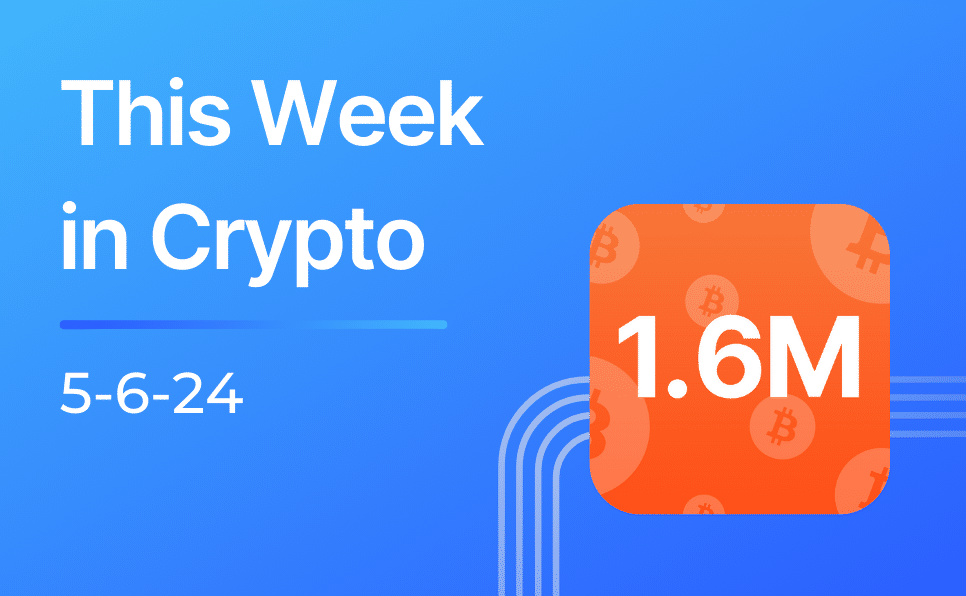Welcome to this week’s edition of This Week in Crypto, where we cover the remarkable stories shaping the cryptocurrency landscape. This week, the Bitcoin network achieved an unprecedented milestone by processing a record-breaking 1.6 million transactions in a single day, thanks largely to the surging popularity of Bitcoin Runes. Meanwhile, some analysts are predicting a monumental shift in the cryptocurrency user base, with projections estimating that the industry could welcome its billionth user by the end of 2025. Adding to the excitement, a solo Bitcoin miner defied the odds by successfully mining a block and securing a $218,000 reward. Join us as we explore these developments that are not only driving innovation but also reshaping the economic landscape of digital currencies.

Bitcoin Runes Drive Record 1.6M Transactions Processed
On April 23, the Bitcoin network experienced a record-setting day, processing over 1.6 million confirmed transactions, just three days into the new halving cycle that began on April 20. This surge was largely attributed to the launch of Bitcoin Runes, a new addition competing with Bitcoin Ordinals and the BRC-20 protocol on the Bitcoin blockchain. According to data from Dune Analytics, transactions involving Runes accounted for 81.3% of all activity on the network on that day. However, by April 29, traditional Bitcoin transactions regained dominance, comprising 77.8% of the total, with Runes making up 18.8%, and the remaining transactions split between ordinals and BRC-20.
The introduction of Bitcoin Runes not only marked a historic high in transaction volume but also significantly benefited the mining sector. Major U.S. mining companies, Stronghold Digital Mining and Marathon, reported notable financial and operational gains from Rune transactions. Since the latest Bitcoin halving, which reduced the reward for mining new blocks, these transactions have generated over 1,200 BTC in transaction fees, underscoring the economic impact of this new digital asset on the broader cryptocurrency ecosystem.

Analyst Predicts Crypto to Hit 1 Billion Users by 2025
The cryptocurrency industry could reach a significant milestone of one billion users by 2025, according to analyst Willy Woo, who based his forecast on an aggregation of various studies, with data suggesting that 65% of current crypto users are Bitcoin holders. Woo’s prediction, detailed in an X post on April 29, presents a more optimistic timeline compared to other industry predictions, like those from the Boston Consulting Group, which estimates reaching the billion-user mark by 2030. Woo’s analysis defines users as those who have completed KYC verification and have been active on the blockchain.
Despite Woo’s optimistic forecast, reaching this target may still pose challenges. A report from Crypto.com in January 2024 noted a 34% increase in crypto owners in 2023, bringing the total to 580 million, with Bitcoin holders making up 51% of this group. However, achieving the one-billion mark would require a 72% growth from the current figures, a steep climb given the past year’s growth rate. Comparatively, the Boston Consulting Group highlights that crypto adoption represents only 0.3% of individual wealth, suggesting substantial potential for growth. This context reflects both the enthusiasm for future growth and the realistic challenges that the industry faces in becoming a mainstream financial platform.

Solo Bitcoin Miner Strikes Gold with $218,000 Reward
In a remarkable feat defying the norms of cryptocurrency mining, a solo Bitcoin miner managed to solve a block alone, securing a reward of $218,544 on Monday. This miner, who solved block 841286, became only the 282nd individual in Bitcoin’s entire ledger of over 841,000 blocks to mine a block solo. Operating with just 12 petahashes per second, this miner accounted for a mere 0.02% of the total network hash rate, translating to odds of around 1 in 5,000 against large mining pools and other competitors. This achievement marked the first successful solo mining operation since the most recent Bitcoin halving, highlighting both the rarity and difficulty of such an endeavor.
Solo mining, which once was the standard method, has become increasingly challenging due to the rise in the network’s overall difficulty and the dominance of mining pools like China’s Antpool and America’s Foundry USA, which currently control 49% of the network’s total hash rate. Unlike pool mining, where miners combine their computational power for more consistent rewards, solo miners rely heavily on luck to reap potentially larger, albeit less predictable, rewards. This solo miner’s success is a stark contrast to the stability of pool mining and a testament to the unpredictability of navigating the Bitcoin network as an individual.








